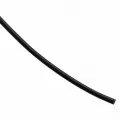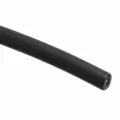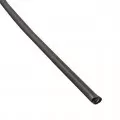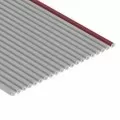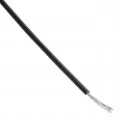OUTLINE:
Rg11 Cable - Wide Range of Products
 94
94Dive deep into the intricate world of RG11 cable as we unravel its complexities and unveil its significance in modern connectivity.
Join us on a journey of exploration and discovery, where we provide a comprehensive explanation of RG11 cable, shedding light on its construction, features, and versatile applications.
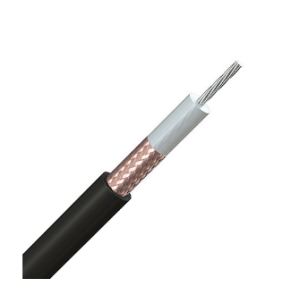
The Introduction of RG11 Cable
Here comes the definition of rg11 cable:
RG11 cable, a stalwart in telecommunications and networking, boasts robust construction and low signal attenuation, making it ideal for high-performance data transmission over long distances.
Originating from mid-20th-century coaxial cable developments, RG11 has evolved to serve diverse applications, including telecommunications infrastructure, cable TV distribution, and high-speed internet access.
With a 75-ohm impedance and superior shielding, RG11 ensures reliable signal transmission amidst electromagnetic and radio frequency interference.
Its versatility extends to broadcasting, residential networks, and industrial automation systems, cementing its status as a cornerstone in modern connectivity solutions.
In this exploration, we unveil RG11's intricacies, empowering readers to leverage its capabilities effectively.
The Specification of RG11 Cable
Here are some typical specifications of RG11 cable:
-
Impedance: RG11 cables usually have an impedance of 75 ohms, which is standard for most CATV and satellite TV applications.
-
Conductor Size: The conductor size of RG11 cables is typically larger compared to other coaxial cables, often around 14 AWG (American Wire Gauge), providing lower attenuation over longer distances.
-
Dielectric Material: The dielectric material separating the inner conductor from the outer shield is usually made of foam polyethylene or solid polyethylene, providing insulation and maintaining the cable's impedance characteristics.
-
Shielding: RG11 cables feature multiple layers of shielding to protect the signal from interference and to minimize signal loss. This typically includes a foil shield and a braided shield.
-
Outer Jacket: The outer jacket of RG11 cables is typically made of PVC (Polyvinyl Chloride) or PE (Polyethylene) for durability and weather resistance.
-
Frequency Range: RG11 cables are designed to transmit signals over a wide frequency range, typically up to 1 GHz or higher, making them suitable for high-bandwidth applications like CATV and satellite TV.
-
Attenuation: RG11 cables have lower attenuation (signal loss) compared to cables with smaller conductor sizes, allowing them to transmit signals over longer distances without significant degradation.
-
Connectors: RG11 cables often come with F-type connectors, which are commonly used in CATV and satellite TV installations. These connectors ensure a secure and reliable connection to the equipment.
What Is Rg11 Cable Used for
RG11 cable is primarily used for high-bandwidth data transmission over long distances in various industries and applications. Some common uses include:
1. Telecommunications Infrastructure: RG11 cable is frequently deployed in telecommunications networks for transmitting voice, data, and video signals over long distances with minimal signal loss.
2. Cable Television Distribution: It is used in cable TV distribution systems to deliver high-definition video signals to subscribers' homes efficiently.
3. Satellite Communications: RG11 cable is employed in satellite communication systems to transmit signals between satellite dishes and receivers, ensuring reliable reception of satellite TV broadcasts and other satellite-based services.
4. CCTV Systems: Closed-circuit television (CCTV) installations utilize RG11 cable for transmitting video surveillance footage over extended distances, maintaining high image quality and signal integrity.
5. High-speed Internet Access: In residential and commercial settings, RG11 cable is utilized for broadband internet connections, offering faster data transmission rates compared to lower-grade cables like RG6.
6. Broadcasting: RG11 is commonly used in broadcasting facilities for transmitting audio and video signals, ensuring high-quality broadcasts without signal degradation over long cable runs.
What Is the Difference between Rg6 Cable and Rg11 Cable
RG6 and RG11 cables are both types of coaxial cables commonly used for transmitting audio, video, and data signals in various applications.
While they share similarities, such as their coaxial construction, they differ in several key aspects:
-
Diameter
RG11 cable has a larger diameter compared to RG6 cable. Typically, RG11 has a diameter of around 0.405 inches (10.3 mm), while RG6 has a diameter of about 0.275 inches (7 mm).
-
Signal Attenuation
RG11 cable exhibits lower signal attenuation than RG6 cable over long distances.
This means that RG11 can transmit signals over greater distances without significant loss of signal strength.
-
Impedance
Both RG6 and RG11 cables are available with different impedance ratings. However, RG6 cables are more commonly available with a 75-ohm impedance, while RG11 cables are often available with both 75-ohm and 50-ohm impedance ratings.
-
Cost
Generally, RG11 cable is more expensive than RG6 cable due to its larger size and lower signal attenuation characteristics.
-
Applications
RG6 cable is commonly used in residential installations, such as for connecting cable TV or satellite dishes to televisions and modems.
It is also used for short-distance networking applications, such as within homes or small office environments.
RG11 cable, on the other hand, is typically used in larger installations requiring longer cable runs, such as in commercial buildings, telecommunications infrastructure, or outdoor installations.
|
Aspect |
RG6 Cable |
RG11 Cable |
|---|---|---|
|
Diameter |
Approximately 0.275 inches (7 mm) |
Approximately 0.405 inches (10.3 mm) |
|
Signal Attenuation |
Higher over long distances |
Lower over long distances |
|
Impedance |
Typically 75 ohms |
Available in both 75 ohms and 50 ohms |
|
Cost |
Generally less expensive |
Generally more expensive |
|
Applications |
Residential installations, short-distance networking |
Larger installations requiring longer cable runs |
Comparison of Rg11 Cable from Different Vendors
When comparing RG11 cable from different vendors, several factors should be considered to ensure you select the most suitable option for your specific needs.
Here's a comparison across key parameters:
1. Construction Quality: Assess the build quality of the cables, including the materials used for the conductor, dielectric insulation, shielding, and outer jacket. High-quality materials contribute to better performance and durability.
2. Signal Attenuation: Look for specifications on signal attenuation per unit length. Lower attenuation values indicate better signal integrity over longer distances.
3. Impedance: Verify that the impedance rating matches your system requirements. Common impedance ratings for RG11 cable are 75 ohms and 50 ohms.
4. Shielding Effectiveness: Evaluate the shielding effectiveness against electromagnetic interference (EMI) and radio frequency interference (RFI). A higher level of shielding ensures better protection of the signal from external interference.
5. Connector Compatibility: Ensure compatibility with the connectors used in your system, such as F-type connectors for cable TV installations or BNC connectors for video surveillance systems.
6. Certifications and Compliance: Check if the cable meets industry standards and certifications, such as UL (Underwriters Laboratories) certification or RoHS (Restriction of Hazardous Substances) compliance.
7. Price and Warranty: Compare prices across vendors while considering the overall value, including warranty terms and after-sales support.
8. Customer Reviews and Reputation: Research customer reviews and feedback on the vendor's reputation for product quality, reliability, and customer service.
9. Availability and Lead Time: Consider factors such as product availability and lead time, especially if you have specific project deadlines or installation timelines.
The End
This detailed exploration of RG11 cable has unveiled its intricacies, applications, and importance in modern connectivity solutions.
By understanding its construction, characteristics, and comparative advantages, you are equipped to make informed decisions in selecting and deploying RG11 cable for your specific needs.
Whether you're navigating telecommunications infrastructure, cable television distribution, satellite communications, or other applications, RG11 cable stands as a robust and reliable solution for high-performance data transmission over long distances.
As technology continues to advance, RG11 cable remains a cornerstone, facilitating seamless communication and connectivity in an increasingly interconnected world.

Disclaimer: The views and opinions expressed by individual authors or forum participants on this website do not represent the views and opinions of Chipsmall, nor do they represent Chipsmall's official policy.

share this blog to:


